-
 Bitcoin
Bitcoin $112200
0.96% -
 Ethereum
Ethereum $4310
0.64% -
 XRP
XRP $2.978
4.28% -
 Tether USDt
Tether USDt $0.9999
-0.02% -
 BNB
BNB $877.9
0.29% -
 Solana
Solana $215.6
6.68% -
 USDC
USDC $0.9997
-0.02% -
 Dogecoin
Dogecoin $0.2387
7.54% -
 TRON
TRON $0.3316
0.73% -
 Cardano
Cardano $0.8633
4.49% -
 Hyperliquid
Hyperliquid $50.46
7.52% -
 Chainlink
Chainlink $23.01
3.82% -
 Ethena USDe
Ethena USDe $1.001
-0.01% -
 Sui
Sui $3.469
2.94% -
 Stellar
Stellar $0.3750
4.79% -
 Bitcoin Cash
Bitcoin Cash $587.2
-2.71% -
 Avalanche
Avalanche $25.48
4.50% -
 Hedera
Hedera $0.2258
3.79% -
 UNUS SED LEO
UNUS SED LEO $9.548
0.05% -
 Litecoin
Litecoin $112.7
-1.24% -
 Cronos
Cronos $0.2527
-2.26% -
 Toncoin
Toncoin $3.098
-0.03% -
 Shiba Inu
Shiba Inu $0.00001287
4.08% -
 Polkadot
Polkadot $4.037
1.46% -
 Uniswap
Uniswap $9.567
3.02% -
 Dai
Dai $0.9997
-0.01% -
 Ethena
Ethena $0.7735
5.26% -
 World Liberty Financial
World Liberty Financial $0.2077
-7.48% -
 Monero
Monero $271.3
0.38% -
 Aave
Aave $302.8
1.35%
Coinbase withdrawal tutorial: How to transfer funds to a bank account
To withdraw funds from Coinbase, link your bank account, convert crypto to fiat, and initiate the transfer through the "Withdraw" section.
Jun 28, 2025 at 02:35 am
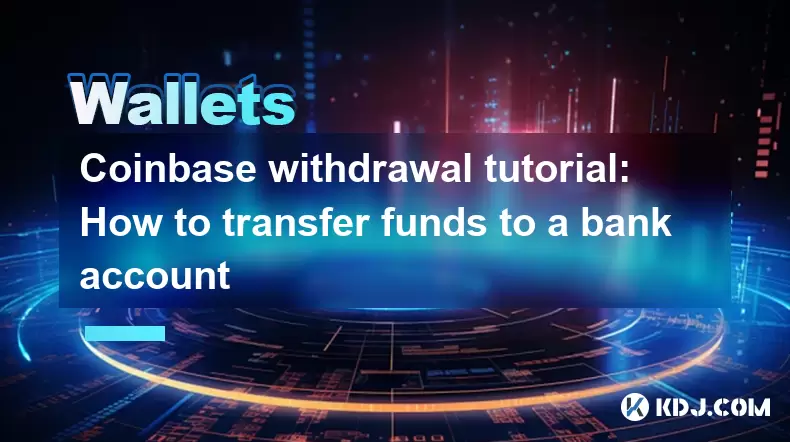
Understanding Coinbase Withdrawals
Coinbase is one of the most widely used cryptocurrency platforms, allowing users to buy, sell, and store digital assets. Once you've successfully traded or held your crypto on Coinbase, the next logical step may be to withdraw funds to a bank account. This process involves converting your cryptocurrency into fiat currency—typically USD, EUR, or GBP—and transferring it directly to your linked bank account.
Before initiating any withdrawal, it's essential to ensure that your account is fully verified. Coinbase requires identity verification to comply with financial regulations like KYC (Know Your Customer) and AML (Anti-Money Laundering) laws. Without completing this process, you won't be able to perform large transactions or withdrawals.
Preparing for a Withdrawal: Setting Up Your Bank Account
To withdraw funds from Coinbase to your bank account, you must first link your bank account within the platform. Here’s how to do it:
- Go to the 'Settings' section in your Coinbase app or website.
- Select 'Payment methods' or navigate directly to the 'Withdraw' tab.
- Click 'Add a new bank account' and provide the required information:
- Bank name
- Routing number
- Account number
- Account type (checking or savings)
After entering your details, Coinbase will verify your bank account. This can take anywhere from one to five business days, depending on your location and financial institution. During this time, Coinbase may send small test deposits to confirm ownership.
Converting Cryptocurrency to Fiat Currency
Once your bank account is successfully linked, the next step is to convert your cryptocurrency holdings into fiat. For example, if you hold Bitcoin (BTC), you'll need to sell it for USD before initiating a withdrawal.
Here’s how to convert your crypto:
- Navigate to the 'Trade' section in your Coinbase wallet.
- Select the cryptocurrency you wish to convert.
- Choose the 'Sell' option and specify the amount.
- Confirm the transaction and wait for it to complete.
It’s important to note that market fluctuations can affect the final amount received. Therefore, always review the estimated value before confirming the sale. Additionally, Coinbase charges transaction fees based on trading volume and payment method used.
Initiating the Withdrawal Process
With your funds now in fiat form, you're ready to initiate the actual bank withdrawal. Follow these steps carefully:
- Go to the 'Wallet' section and select the fiat currency you want to withdraw.
- Click the 'Withdraw' button.
- Enter the amount you wish to transfer.
- Select your previously linked bank account as the destination.
- Review all details and click 'Confirm'.
Depending on your region, the transfer may take between 1 to 5 business days to reflect in your bank account. Coinbase uses the ACH (Automated Clearing House) network for USD transfers, which typically takes 1–3 business days. For international users, SEPA or SWIFT transfers might apply, and processing times could vary accordingly.
Fees and Limits Associated with Coinbase Withdrawals
Every withdrawal comes with associated fees and limits, which can vary based on your country, payment method, and verification level.
Common fees include:
- Trading fees: Charged when selling cryptocurrency.
- Withdrawal fees: Applied when moving funds to your bank account.
- Network fees: Applicable for blockchain-based transfers (not applicable for fiat withdrawals).
Limits are also in place to prevent fraud and ensure compliance. For example:
- Unverified accounts may have daily withdrawal caps.
- Verified accounts enjoy higher limits but may still be subject to weekly or monthly caps.
- Users in certain jurisdictions might face additional restrictions.
Always check the fee schedule under the 'Fees' section of your Coinbase profile before proceeding.
Troubleshooting Common Withdrawal Issues
Sometimes, users encounter issues when trying to withdraw funds. Some common problems include:
- Bank account not showing up: Ensure the account has been successfully verified.
- Withdrawal declined: Check if there are any pending verifications or suspicious activity alerts.
- Delayed transfers: Contact customer support if the funds haven’t arrived after the expected timeframe.
If you believe something has gone wrong, Coinbase offers 24/7 customer support via live chat or email. Be prepared to provide screenshots, transaction IDs, and timestamps to expedite resolution.
Frequently Asked Questions (FAQs)
Q: Can I cancel a withdrawal once initiated?A: If the transaction hasn't processed yet, you may be able to cancel it through your transaction history. However, once the ACH or SEPA process begins, cancellation becomes difficult.
Q: Why does my bank reject the transfer from Coinbase?A: Banks sometimes flag crypto-related transfers due to fraud detection systems. Reach out to your bank to confirm the legitimacy of the transaction.
Q: Is there a minimum withdrawal amount?A: Yes, Coinbase imposes minimum withdrawal thresholds to cover processing costs. These vary by currency and region.
Q: What should I do if I entered the wrong bank details?A: Immediately contact Coinbase support with your transaction ID. Recovery depends on whether the funds have already been sent and whether the recipient's bank cooperates.
Disclaimer:info@kdj.com
The information provided is not trading advice. kdj.com does not assume any responsibility for any investments made based on the information provided in this article. Cryptocurrencies are highly volatile and it is highly recommended that you invest with caution after thorough research!
If you believe that the content used on this website infringes your copyright, please contact us immediately (info@kdj.com) and we will delete it promptly.
- Canada, Coins, and Christmas: A Festive Forecast
- 2025-09-09 04:25:15
- Chainalysis, XRPL, and Token Monitoring: A New Era of Transparency and Security
- 2025-09-09 04:45:13
- NPM Attack Targeting Bitcoin Wallets: What You Need to Know
- 2025-09-09 04:45:13
- Lion Group, SOL, and Sui Tokens: A Strategic Shift in the Crypto Landscape
- 2025-09-09 05:05:12
- VivoPower, Tembo, and Global Payments: A New Era with RLUSD
- 2025-09-09 04:50:12
- Circle, USDH, Stablecoins: The Battle for the Future of Finance
- 2025-09-09 05:05:12
Related knowledge
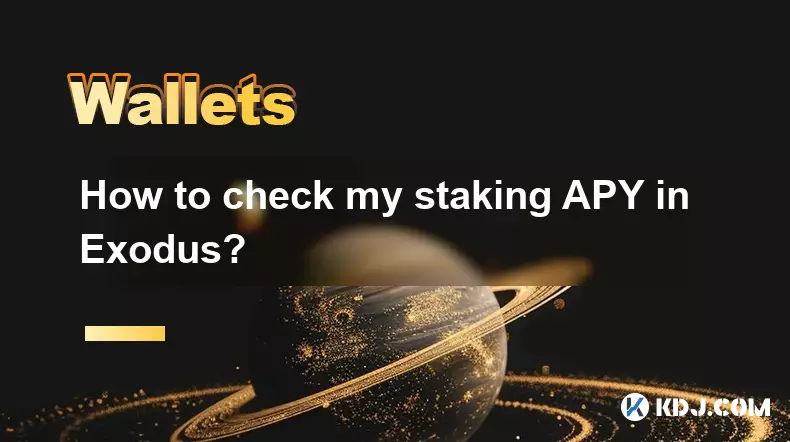
How to check my staking APY in Exodus?
Sep 08,2025 at 08:19pm
Understanding Staking APY in Exodus Wallet1. Staking APY, or Annual Percentage Yield, reflects the total return earned on a staked cryptocurrency over...
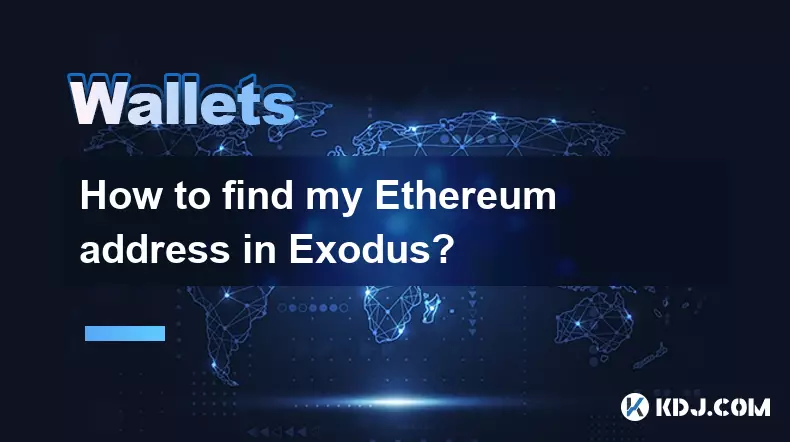
How to find my Ethereum address in Exodus?
Sep 06,2025 at 06:18pm
Accessing Your Ethereum Address in Exodus Wallet1. Launch the Exodus wallet application on your desktop or mobile device. Ensure that you have success...

How to find my Bitcoin address in Exodus?
Sep 09,2025 at 02:36am
Accessing Your Bitcoin Address in Exodus Wallet1. Open the Exodus wallet application on your desktop or mobile device. Ensure that the software is upd...
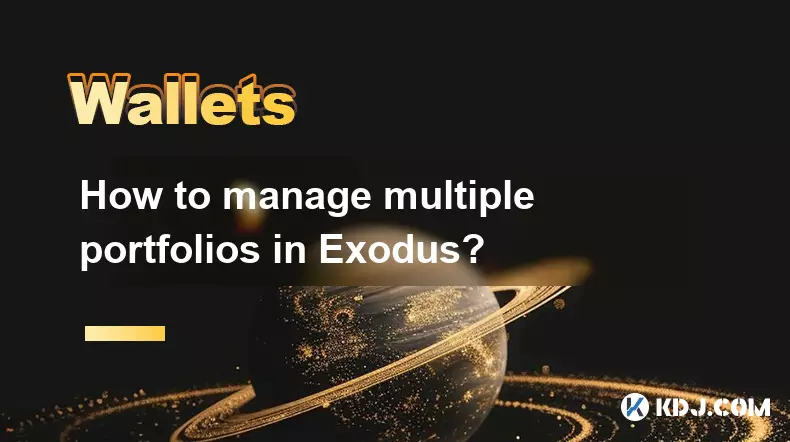
How to manage multiple portfolios in Exodus?
Sep 07,2025 at 04:00pm
Understanding Portfolio Management in ExodusExodus is a digital wallet that supports a wide range of cryptocurrencies, allowing users to store, exchan...
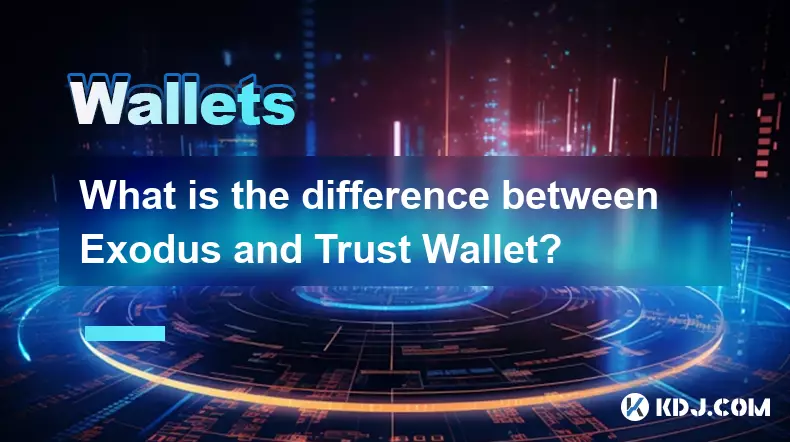
What is the difference between Exodus and Trust Wallet?
Sep 05,2025 at 05:36pm
Differences in Wallet Architecture and Design Philosophy1. Exodus operates as a multi-asset desktop and mobile wallet with an emphasis on user experie...

What is the difference between Exodus and MetaMask?
Sep 08,2025 at 03:01pm
Understanding the Role of Decentralized Exchanges in Modern Crypto Trading1. Decentralized exchanges (DEXs) have become a cornerstone of the cryptocur...

How to check my staking APY in Exodus?
Sep 08,2025 at 08:19pm
Understanding Staking APY in Exodus Wallet1. Staking APY, or Annual Percentage Yield, reflects the total return earned on a staked cryptocurrency over...

How to find my Ethereum address in Exodus?
Sep 06,2025 at 06:18pm
Accessing Your Ethereum Address in Exodus Wallet1. Launch the Exodus wallet application on your desktop or mobile device. Ensure that you have success...

How to find my Bitcoin address in Exodus?
Sep 09,2025 at 02:36am
Accessing Your Bitcoin Address in Exodus Wallet1. Open the Exodus wallet application on your desktop or mobile device. Ensure that the software is upd...

How to manage multiple portfolios in Exodus?
Sep 07,2025 at 04:00pm
Understanding Portfolio Management in ExodusExodus is a digital wallet that supports a wide range of cryptocurrencies, allowing users to store, exchan...

What is the difference between Exodus and Trust Wallet?
Sep 05,2025 at 05:36pm
Differences in Wallet Architecture and Design Philosophy1. Exodus operates as a multi-asset desktop and mobile wallet with an emphasis on user experie...

What is the difference between Exodus and MetaMask?
Sep 08,2025 at 03:01pm
Understanding the Role of Decentralized Exchanges in Modern Crypto Trading1. Decentralized exchanges (DEXs) have become a cornerstone of the cryptocur...
See all articles

























![[Pycoin] PI Coin -US President (Trump) Declaration ?? !! 'US' runs first. / Paikoin mining speed acceleration [Pycoin] PI Coin -US President (Trump) Declaration ?? !! 'US' runs first. / Paikoin mining speed acceleration](/uploads/2025/09/08/cryptocurrencies-news/videos/pycoin-pi-coin-president-trump-declaration-runs-paikoin-mining-speed-acceleration/68bed38c01e7a_image_500_375.webp)






























































